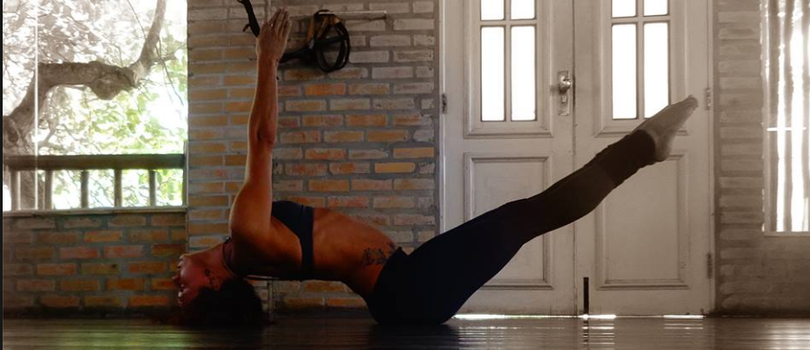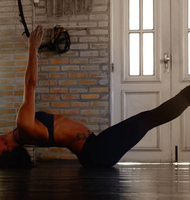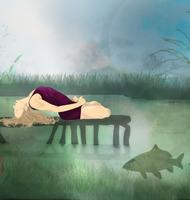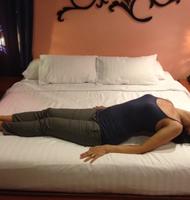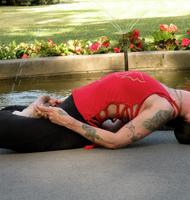Fish Pose
Matsyasana (mahtz-yah-sah-nah[needs IPA]; Sanskrit: मत्स्यासन; IAST: Matsyāsana) or Fish Pose is an asana.
It is commonly considered a counterasana to Sarvangasana, or shoulder stand, specifically within the context of the Ashtanga Vinyasa Yoga Primary Series. The name comes from the Sanskrit words matsya (मत्स्य) meaning "fish" and asana (आसन) meaning "posture" or "seat". The asana is a backbend, where the practitioner lies on his or her back and lifts the heart (anahata) chakra by rising up on the elbows and drawing the shoulders back. The neck is lengthened, and the crown of the head Sahasrara chakra is "pointed" toward the 'wall' behind the practitioner. As the arch of the back deepens with practice, and the heart and throat open further, the top of the head may brush the ground, but no weight should rest upon it.
- A traditional text that Matsyasana is the “destroyer of all diseases.”
- Stretches the deep hip flexors (psoas) and the muscles (intercostals) between the ribs
- Stretches and stimulates the muscles of the belly and front of the neck
- Stretches and stimulates the organs of the belly and throat
- Strengthens the muscles of the upper back and back of the neck
- Improves posture
